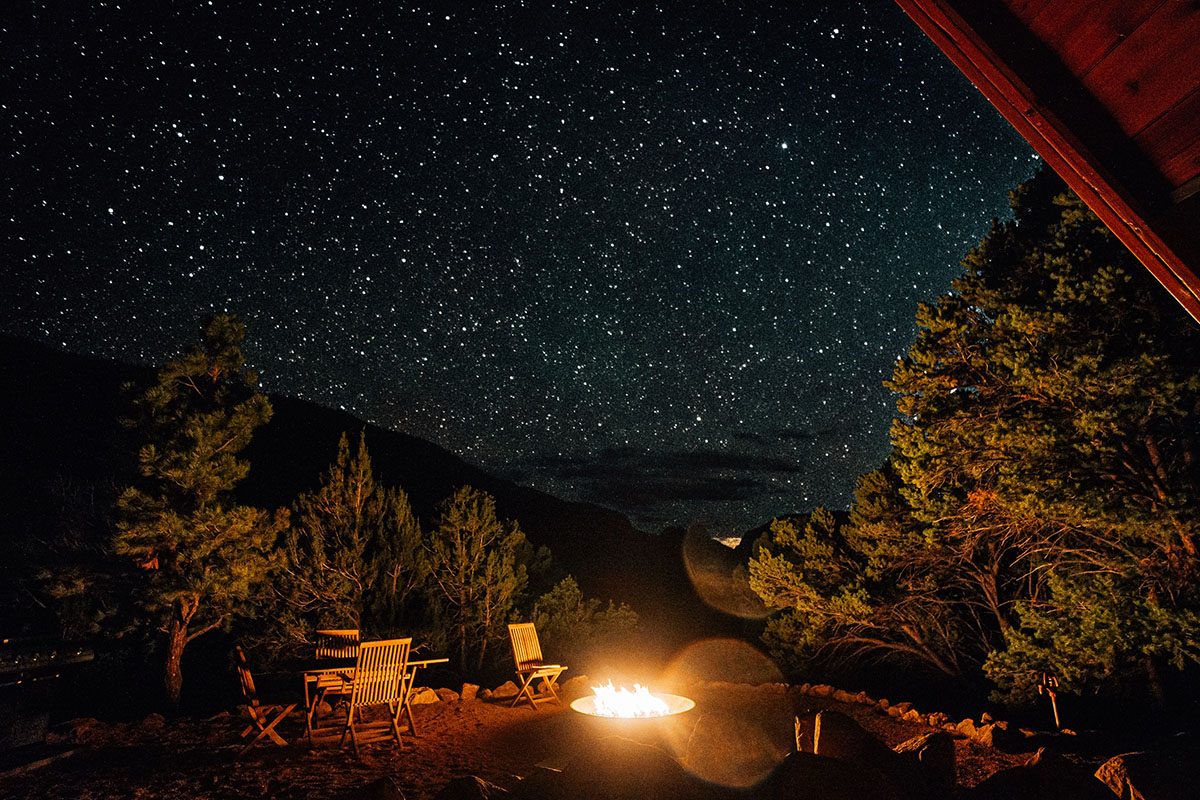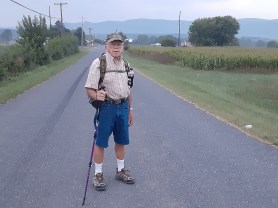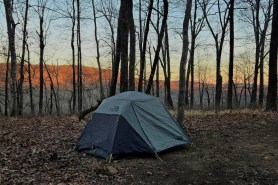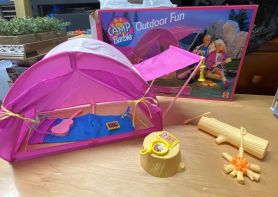

Don’t put that camping gear away yet. With the right gear and mindset, you can enjoy camping this fall, even as the weather turns colder. Here are 12 top fall camping tips to extend your camping season well beyond the warm summer months.
Videos by Outdoors
1. Be Covered
Being covered in fall camping is the difference between a pleasant trip and an unpleasant one. Be sure to pack a tarp or tent footprint to insulate the tent bottom from the ground. A rainfly is essential for keeping wet weather out and some heat in. Having a sleeping bag rated for colder temperatures is also essential to “be covered.” A sleep pad or air mattress can also elevate you off the cold ground.
2. Come Weather-Aware

When autumn rolls around, the weather becomes less predictable. Depending on where you camp, it may be sunny and warm when you first arrive and turn cold and rainy later in the trip. Check the weather forecast and futurecast as you pack and plan your days. Research road conditions, road closures, and campground closures before hitting the road. Do a second check of the weather on the road, especially if you will lose cell service at your destination. If your campground has a host, he or she can give you a weather update. A drive to town or a trailhead may also put you within cell range for weather updates.
3. Fuel up on Comfort Food
There is no better way to keep warm than fueling your body with comforting foods, especially in seasonal flavors. In autumn, the body burns more calories keeping body temperature regulated and while hiking or doing other physical activities. Break out the Dutch oven to cook soups and chili. A hot breakfast with French toast or pancakes may be just what the body needs. Have warm drinks on hand—from hot cocoa to mulled cider—because a warm cup in your hands can help you feel toasty inside.
4. Get Moving

Waking up and doing some yoga, stretches, or even jumping jacks can help you get the blood flowing right away. Make sure to keep your body moving throughout the day, whether you’re hiking, biking, or paddling (another activity that’s not off limits in the fall). Even campground games from Kanjam to a slackline can help the blood flow. Some movement before you go to bed can also help make you warm before you snuggle up in your sleeping bag for the night.
5. Have a Smart Camp Setup
Take advantage of Mother Nature to make your trip as enjoyable as possible. For instance, consider placing your tent somewhere with natural cover from weather and wind, if possible. Maximize the sunlight by being smart about where you set up your kitchen, eating area, and game-playing area.
6. Keep Track of Hydration

Just because it isn’t as hot out doesn’t mean your body can function without proper hydration. In fact, good hydration is key to preventing hypothermia. It helps stabilize body temperature and regulate blood flow. Hydration doesn’t have to just come from water, though. Fruits and vegetables, broths, and hot tea can help hydrate the body during the cooler months.
7. Layer up
The weather and temperature can change rapidly in some places during the fall, giving you what feels like three or four seasons in one single day. This is why layering is so important. Pack various clothing items you can layer made from fleece, wool, and synthetic materials—including a base layer, a mid layer, and an insulating layer. A lightweight rain- and wind-resistant jacket is great to put over your clothes during the day, and an insulating jacket is perfect for those cold evenings and mornings. Don’t forget a hat, gloves/mittens, extra socks, and extra shoes.
8. Location, Location, Location

Your fall recreation options may differ from your summer ones, and this may play a part in where you book your fall camping trip. Some campgrounds close in late summer, making your choices less abundant. If you really want to check out the changing of the leaves, book a campground with opportunities to see vibrant color at its peak. If you want to fish, book a campground with the ability to cast a line closeby.
9. Pajamarama
Have a set (or two) of clothes dedicated to sleeping only. These clothes will stay dry, since you’re only using them for sleeping, and they’ll help keep you toasty warm for bedtime. Don’t forget socks and camp slippers to up the warmth game. Then, before you fall asleep, place your morning clothes in your sleeping bag and leave them there overnight so they are warm in the morning. Bring some sleepy tea for a warm drink that’ll help you fall asleep quickly.
10. Prepare for Shorter Days

With fall comes fewer hours of daylight, and you should be conscious of this when fall camping. Maybe you want to plan to get to the campground earlier so you’re not trying to find your site in the dark or rushing to get camp set up before the sun sets. Pre-prep dinners at home to cut down on cooking time, which will be helpful when the sun sets earlier.
If you plan to hike, fish, or do other activities during the day, plan for it to get cold in the mornings and evenings. Be prepared to start earlier or have a plan to be out after dark. Make sure to have headlamps or other sources of light handy.
11. Radiate Warmth
Most fire bans lift in the cooler months. A campfire in the morning and at night can be great for the mind and for warming up the body. Use this opportunity to catch up with your group, tell stories, or just gaze at the stars.
For those chilly times between campfires, use hand and foot warmers for extra comfort. To warm up your sleeping space, place a sealed bottle of warm water in your sleeping bag before you get in.
12. Watch out for Animals

Animal behavior changes in the autumn months as animals prepare for winter. Bears and other animals will be more active throughout the day, eating and collecting food to store through the winter. Elk, moose, and deer are entering their rut season and show more aggressive behavior. Give animals proper space and leave no trace to keep animals from coming into campgrounds.









